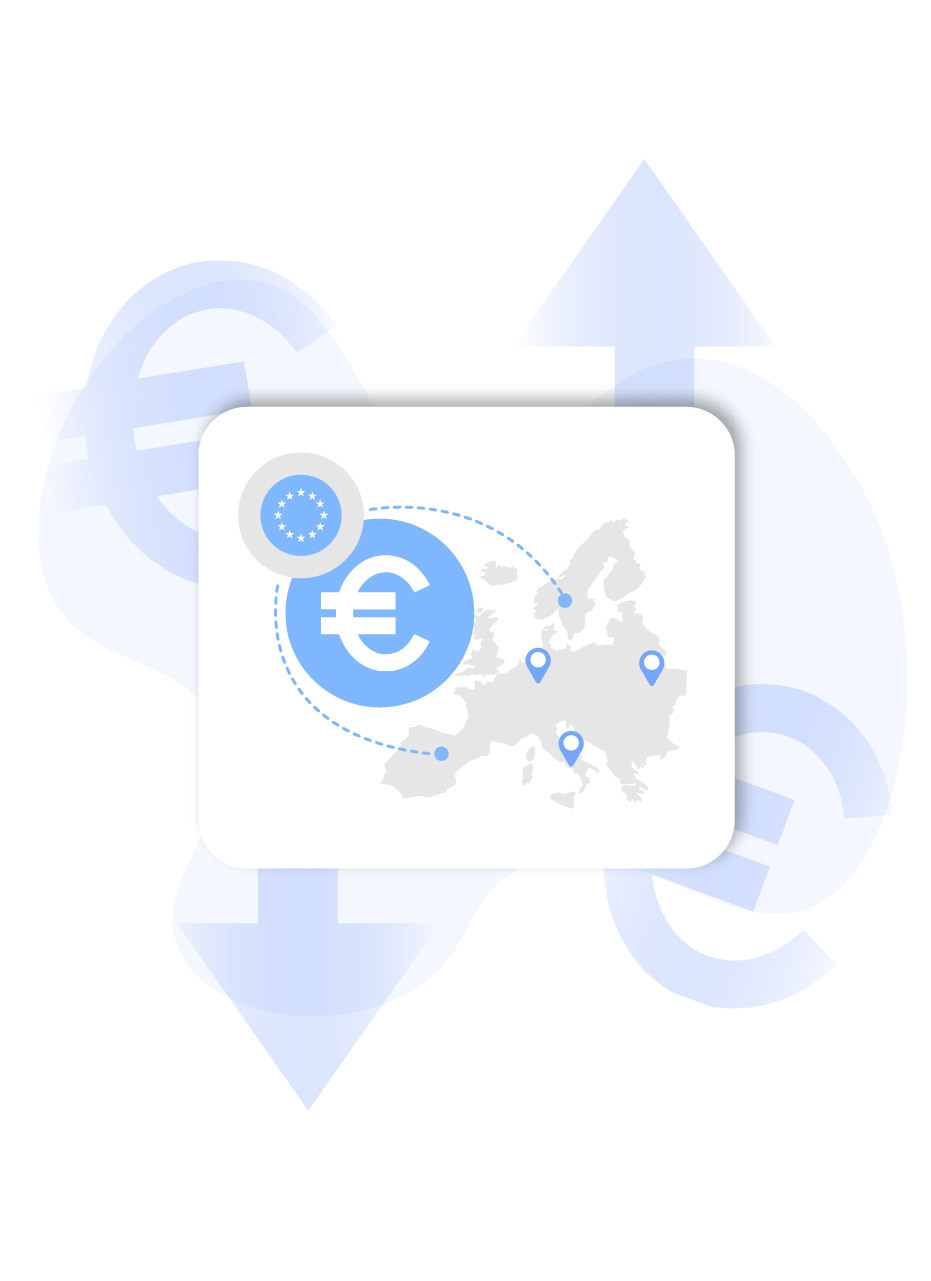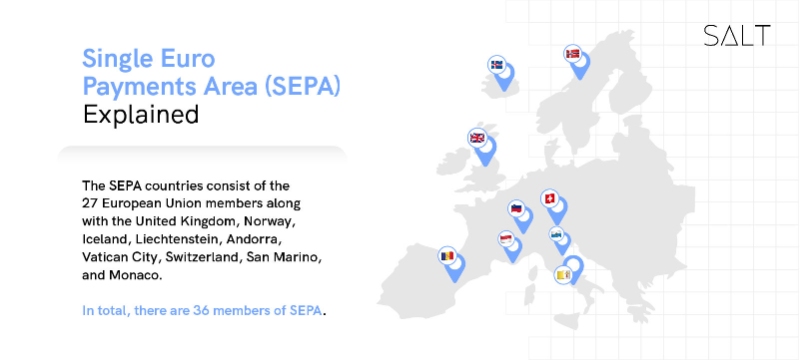
What is Single Euro Payments Area (SEPA)?
The Single Euro Payments Area (SEPA) is a method of transaction created by the EU that harmonises the way cashless payments are sent and received between all the countries that use Euro. SEPA is used by European government agents, businesses, and consumers alike who want to make payments through direct debit, credit transfers, and instant card transfers.
SEPA payments make it seamless for people in these different countries to make payments to each other with the same ease and cost as that of a domestic transaction. SEPA is approved and regulated by the European Payment Council (EPC) for use across 27 European Union countries and nine other European countries where Euro is common.
History of SEPA
The EU passed the Payments Services Directive In 2007, forming the legal basis for the establishment of SEPA the next year. SEPA was completely active for credit and debit payments in the Euro area by 2014. By 2016, it was fully implemented in the non-Euro area of SEPA countries as well.
SEPA was launched by the EU banking and payments industry with support from the European Commission, the Eurosystem, national governments, and various public authorities.
The legal framework of SEPA was drawn with the help of the ECB in close cooperation with the European Commission and is mainly based on the Payment Service Directive (PSD/PSD2), the Cross-Border Payments Regulation, the Interchange Fee Regulation, and the SEPA Migration End-Date Regulation.
In 2019, the European Commission forbade banks belonging to non-Euro European Union countries from charging extra fees for cross-border transactions. The new rule in place states that everyone in the European Union can transfer Euros across countries at the same cost as they would incur for a domestic transaction.
The rule also mandates that customers are informed of the cost of a currency conversion while making a payment in a different currency.
Significance of SEPA
Single Euro Payments Area (SEPA) payments enable its customers to make cashless Euro payments anywhere in the European Union and some non-EU countries as well, in a safe, fast, and efficient manner, that too with the ease of making domestic payments.
The payment integration enabled by SEPA has brought new heights to the competitiveness and efficiency of the European economy by removing any differences between cross-border and national payments by harmonising the payment standards between all the SEPA countries.
SEPA helped establish the Euro as a single currency and also harmonised the way non-cash Euro transactions take place. The SEPA project was crucial for the Eurosystem.
How does SEPA work?
The primary purpose of SEPA payments is to make electronic payments between two countries as cheap and easy as it generally is within one country.
SEPA payments greatly help with economic integration and labour mobility among SEPA countries as it makes it easy for retail transactions to directly debit accounts in another SEPA country and makes the life of those working, living, or travelling in foreign countries easier by allowing them to use their accounts in their home country to receive direct deposit payments and pay bills through cashless transfers.
The system also brings down prices by forcing more competition into the payments industry, as now there’s a single market for payment services.
There are four payment processing schemes in SEPA:
SEPA Credit Transfer (SCT)
SEPA Instant Credit Transfer (SCT inst)
SEPA Direct Credit Core (SDD Core)
SEPA Direct Debit Business-to-Business (SDD B2B)
The implementation guidelines and rules of how SEPA nations regulate cashless Euro payments amongst themselves are set by these schemes. SEPA currently operates in 36 member countries and facilitates over 43 billion transactions per year.
Which countries are a part of SEPA?

The SEPA countries consist of the 27 European Union members along with the United Kingdom, Norway, Iceland, Liechtenstein, Andorra, Vatican City, Switzerland, San Marino, and Monaco. In total, there are 36 members of SEPA.pu
SEPA remains a collaborative, ongoing initiative among the SEPA countries in 2022 and is managed by the European Payments Council in collaboration with the European Central Bank, the European Commission, and other European stakeholders.
Is SEPA only for Euro?
SEPA payments only cover payments made in Euro and are not a replacement for all other types of payment methods in the SEPA countries, especially not the transactions that are carried in currencies other than the Euro. Non-Euro domestic and international transactions still exist and use different payment schemes.
We do hope this article has helped you understand Single Euro Payments Area (SEPA) in complete detail! Want to read up more such informative articles about the world of international payments?
The Salt blog is just the place for you!


